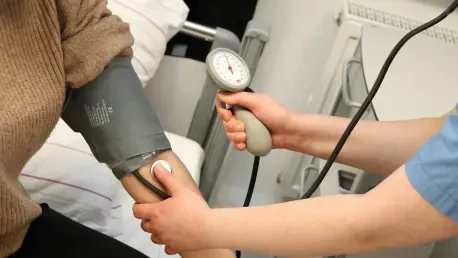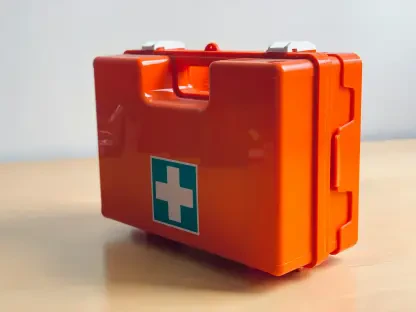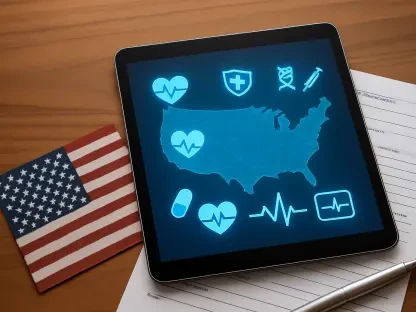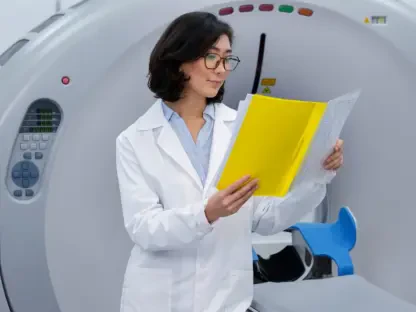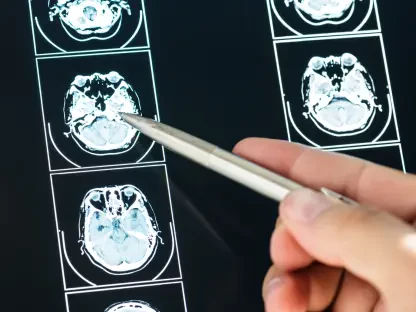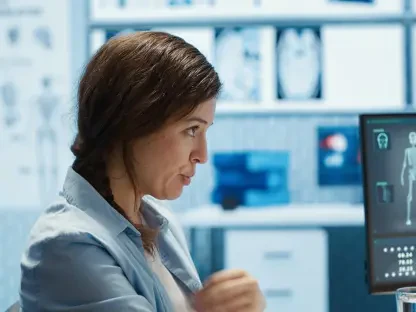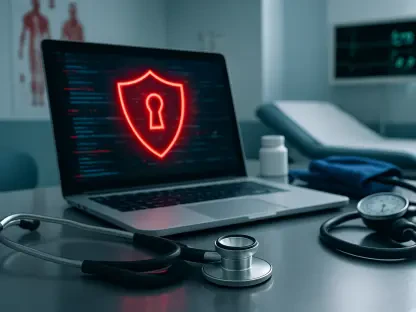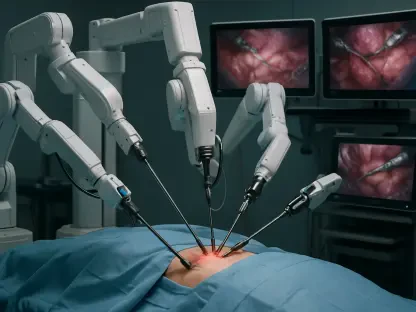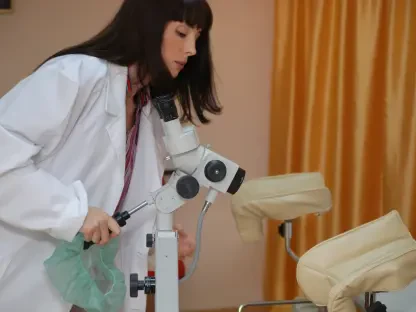The healthcare industry, particularly nursing, has undergone a remarkable transformation through technological innovations. With the convergence of digital tools and healthcare practices, traditional nursing has evolved significantly. This transformation is vividly illustrated through the experiences of Daniel P. Ireland, whose extensive career has borne witness to these revolutionary shifts. From early manual methodologies to advanced automated systems, the technological evolution within nursing has led to a profound increase in precision, efficiency, and patient care quality. This exploration delves into several pivotal advancements, each contributing uniquely to the reshaping of nursing and patient management paradigms.
Technology’s Transformation of Nursing
Modernizing Nursing Practice
The landscape of nursing has been reshaped by technological advancements, as seen through the eyes of healthcare professionals like Daniel P. Ireland. His career, spanning several decades, illustrates the sweeping changes from traditional manual practices to modern automated solutions. Notably, the transition from manually calculating IV drip rates to employing smart pumps has heralded a new era in nursing. These smart pumps autonomously manage the intricate calculations and delivery of medications, ensuring a precision previously unattainable through manual means. Such developments underscore a broader healthcare trend focused on improving efficiency and accuracy through technology.
This shift is reflective of the wider movement within the medical field towards achieving enhanced precision in procedures. With advancements such as robotic surgery, the surgical landscape has experienced unprecedented enhancements in accuracy and outcomes. These technological innovations have led to significant changes in methodology, allowing healthcare professionals to deliver treatments with better precision. Consequently, the integration of technology into nursing practice fosters improvements not only in the speed and accuracy of procedures but also enhances overall patient healthcare delivery, building a more reliable and advanced healthcare system.
Precision and Efficiency in Healthcare
Technological evolution in healthcare reaches far beyond traditional nursing roles, permeating nearly every facet of patient care. The advent of robotic surgery represents an extraordinary leap in surgical precision, providing surgeons with unprecedented control and accuracy. This shift fundamentally changes how surgical procedures are conducted, reducing the margin for error and enhancing patient outcomes. Such innovations have contributed to a trend in healthcare towards embracing technological advancements to achieve greater precision. This trend is progressively reshaping the nursing industry, making it more effective and precise in addressing complex medical challenges.
These technology-driven changes in nursing are not merely about integrating new devices but involve a profound transformation of healthcare methodologies. By enhancing precision, these advancements contribute significantly to improving clinical outcomes and patient safety. Health practitioners are now empowered with tools that can conduct intricate procedures with a higher degree of certainty, ultimately elevating the standard of care patients receive. Consequently, this technological evolution within the healthcare sector is instrumental in laying the groundwork for a future where the integration of innovative solutions is seen as integral to effective healthcare delivery.
Enhanced Connectivity in Healthcare
Improved Communication and Collaboration
Communication advancements have played a pivotal role in bridging gaps within healthcare settings, fostering a collaborative environment among medical professionals. Innovative technologies have streamlined communication, enabling real-time exchanges of critical information among nurses, specialists, and pharmacists. This seamless connectivity ensures that healthcare providers have timely access to essential patient data, enabling informed decision-making processes. The integration of these systems enhances collaboration, reducing silos within healthcare facilities and leading to improved patient care outcomes by promoting a more cohesive approach to healthcare delivery.
Integrated communication systems within healthcare settings facilitate a comprehensive exchange of information, further enhancing the quality of care. By enabling healthcare professionals to collaborate more effectively, these systems ensure that patient information is readily available among teams, minimizing errors and redundancies. The resulting improved communication fosters a more synchronized healthcare delivery process, ensuring that patient care is both timely and effective. This technological integration represents a significant shift in how healthcare professionals interact, ultimately fostering improved patient satisfaction and outcomes through enhanced coordination and collaboration.
Virtual Nursing and Remote Monitoring
Technological advances in virtual nursing and remote monitoring have transformed patient care, enhancing accessibility and efficiency. Virtual nursing platforms allow seasoned nurses to provide guidance and care across different locations, breaking traditional geographical constraints. This model supports bedside care while enabling seamless patient management through remote channels. The introduction of remote monitoring tools exemplifies how technology facilitates comprehensive oversight in patient care, empowering nurses to focus on critical aspects of direct patient interactions while maintaining oversight over a wider patient base.
These innovative technologies not only optimize care delivery but also ensure continuous monitoring, which is vital in managing chronic conditions and preventing complications. By incorporating remote monitoring tools, healthcare providers can maintain a constant watch over patient conditions, ensuring timely interventions when necessary. This proactive approach leads to enhanced patient outcomes by allowing healthcare professionals to address potential issues before they escalate. The integration of such technologies marks a pivotal evolution in nursing practices, promoting a model of care that is as preventive as it is reactive.
Technological Innovations in Nursing
The Role of Electronic Medical Records (EMR)
The adoption of Electronic Medical Records (EMR) has been a cornerstone in advancing nursing practice by enhancing patient care quality and safety. EMRs provide an organized platform for accessing real-time patient data, streamlining documentation and care coordination across diverse healthcare environments. This innovation ensures consistency in patient records, leading to better-informed decision-making and improved continuity of care. Having a unified system for patient data management reduces administrative burdens on nurses and allows them to focus more on patient-centric tasks, thus improving overall care delivery.
Building upon the foundation laid by EMRs, additional technological innovations have further enhanced nursing practice. Automated medication dispensing systems and bedside barcode scanning are innovations that reduce human error, particularly in medication administration. These technologies not only fortify the safety protocols in patient care but also contribute to operational efficiencies by minimizing time spent on manual processes. By leveraging EMR systems as an integral part of the healthcare continuum, nurses can deliver superior care informed by accurate and up-to-date patient information, fostering a more robust framework for ongoing innovation.
Automation and AI in Nursing
Automation and AI are steadily revolutionizing healthcare, offering new means to enhance efficiency and patient outcomes in nursing. Automated delivery robots, such as Moxi, exemplify how automation can alleviate nurses’ administrative tasks, like retrieving necessary supplies, thereby allowing them more time for direct patient interaction. Incorporating AI-based systems further assists in nursing practices by providing timely critical alerts and scoring workloads to prevent burnout, ultimately aiming for a balanced workload and healthier work environments for clinicians.
These technologies work harmoniously to elevate the quality of patient care by empowering nurses to deliver more focused, patient-centered services. By automating routine and repetitive tasks, healthcare providers can allocate resources and time toward addressing patients’ comprehensive needs. AI empowers decision-making processes, enhancing situational awareness through predictive technologies and data-informed insights. As these technologies continue to develop and integrate into healthcare environments, they promise to redefine the scope of nursing, offering a future where patient care is more personalized and efficient.
Future of Technology in Nursing
Patient Safety and Standardization
Incorporating advanced technologies has substantially improved patient safety through the standardization of care processes. These innovations have led to a decrease in hospital-acquired injuries and enhanced patient outcomes, ultimately promoting healthier and longer lives for individuals. The data storage and analysis capabilities of EMR systems enable healthcare providers to consistently track quality indicators, facilitating a data-driven approach to evidence-based improvements in healthcare delivery processes. Through standardizing care protocols, technology empowers healthcare systems to deliver high-quality care consistently.
Technological advancements have also instilled a culture of continuous improvement within healthcare institutions, as data analytics drive incremental enhancements and innovations. By fostering an environment of standardized practices, healthcare providers can better anticipate and mitigate potential risks. This focus on safety and quality by leveraging cutting-edge technology demonstrates the vital role technology plays in advancing nursing practice. It ensures that the delivery of care is both effective and consistent, thus enhancing trust in healthcare institutions and the services they provide.
Anticipating Future Transformations
The healthcare sector, especially nursing, has seen an extraordinary transformation due to technological advancements. With the integration of digital tools into healthcare, the field of nursing has evolved substantially. A prime example of this shift is seen in the career of Daniel P. Ireland, who has extensively witnessed these groundbreaking changes over time. Moving from traditional manual processes to sophisticated automated systems, the technological progress in nursing has significantly enhanced accuracy, efficiency, and the overall quality of patient care. Key innovations, like electronic health records, telehealth services, and advanced diagnostic tools, have redefined nursing and patient management practices. These advances not only streamline operations but also empower nurses to deliver better care, thereby improving patient outcomes. The emphasis on technology in nursing illustrates the dynamic relationship between healthcare improvements and digital innovation, marking a new era in patient care that prioritizes efficiency and precision.
